October Mississippi River Gage Readings
Author
Published
10/30/2024
Background
The Mississippi River is the largest watershed in the United Sates, covering more than 40% of the continental US. The Mississippi River and its 29 locks and dams are essential to U.S. agriculture, especially for corn and soybean farmers with nearly 60% of grain exports being shipped by barge on the river. The barge port system is significant to national trade, representing more than 500 million tons of shipped goods per year. Barges have become the most efficient way to move crops along the Mississippi River, with 15 barges capable of transporting as much grain as 1,000 semi-trucks. However, the water level of the river is low for the third year in a row. This comes as the USDA’s October Crop Production Report estimates this harvest season will result in the second largest corn crop and the largest soybean crop on record.
Mississippi River Gage Readings
On October 24th, the river stage level at Memphis, TN reached a low of -9.08 ft. As seen in figure 1, stage levels were well above the three-year average to begin October before dropping below zero feet on October 10th. The US Army Corps of Engineers estimates that it will continue to decrease, ultimately dropping to -10.1 ft on October 31st.

Figure 1. October Lower Mississippi River Gage Readings at Memphis, TN
The stage level at Dubuque, IA has stayed relatively consistent through the month of October and is slightly less than the levels seen in 2023 and the three-year average (Figure 2). October stage levels ranged from 4.22 ft to 4.71 ft with an average of 4.54 ft through October 24th.
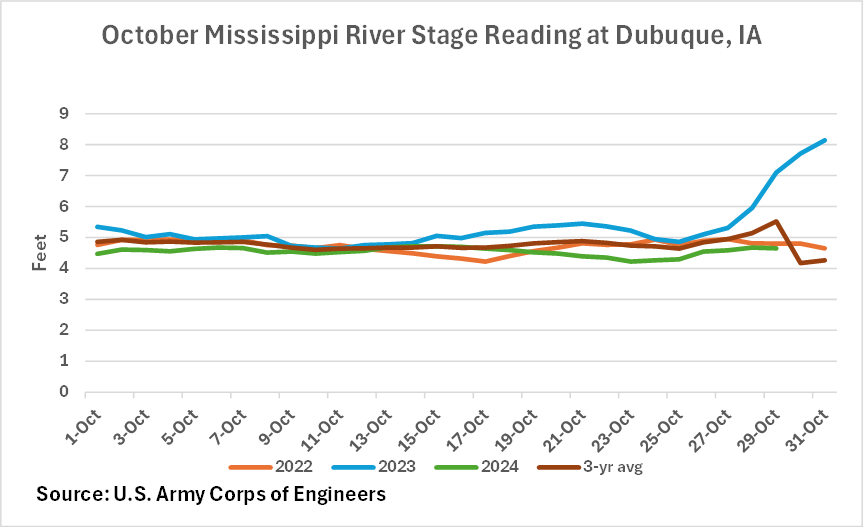
Figure 2. October Upper Mississippi River Gage Readings at Dubuque, IA
Barge Rates
Barges cannot transport as much product when water levels are low because they could run aground and become stuck. The lower water levels have not led to losing export business, but it has a negative impact on basis levels through increasing barge rates passed onto farmers in the form of lower cash prices.
Table 1. Weekly Barge Rates: Southbound

Current Drought Conditions
The most current U.S. Drought Monitor shows 45% of the contiguous U.S. is experiencing moderate to exceptional drought (Figure 3). On February 2nd, 2024, the U.S. Army Corps of Engineers announced that the two-year drought ended. However, both rain and water levels began to decline significantly starting in July. Recent hurricanes such as Helene and Gilbert provided brief periods of rainfall along certain stretches of the Mississippi River, but most of the Midwest and Great Plains are still experiencing drought. The majority of Iowa is experiencing moderate to exceptional drought with parts of southern Iowa experiencing abnormally dry conditions.
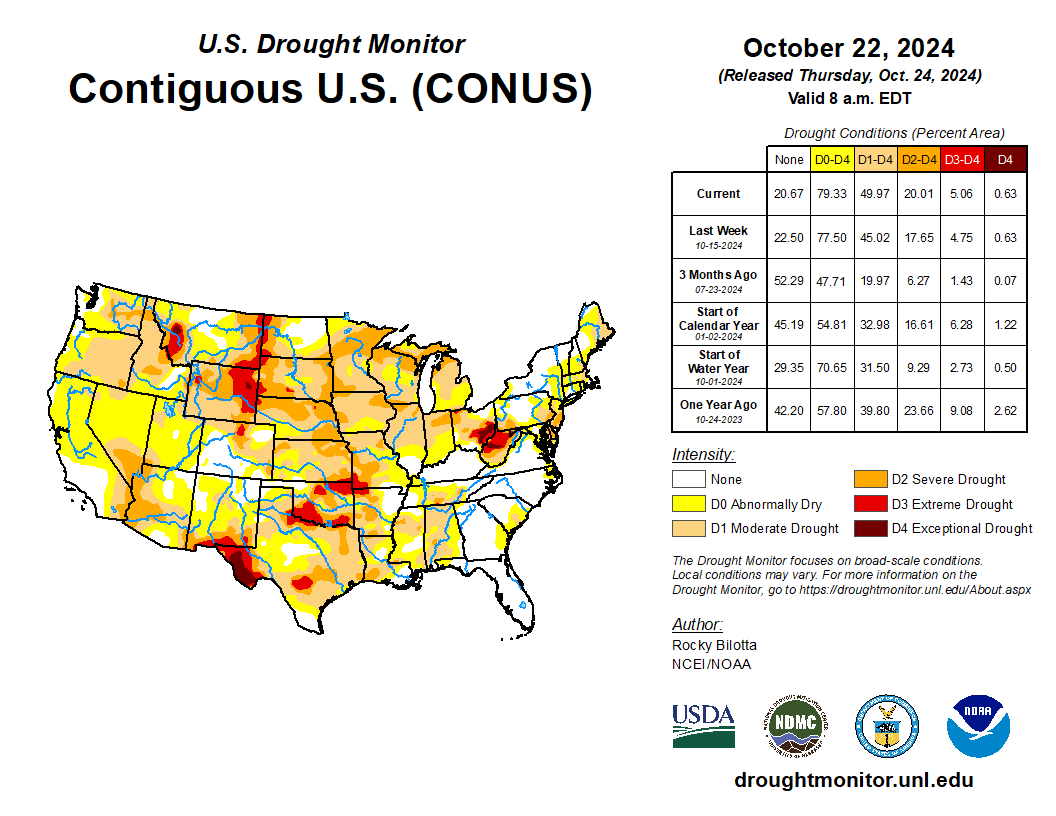
Figure 3. U.S. Drought Monitor for Contiguous U.S.
Figure 4 and Figure 5 display that 76% and 68% of corn and soybean production areas are experiencing some level of drought respectively. The major corn and soybean growing areas in Iowa are within the drought areas.
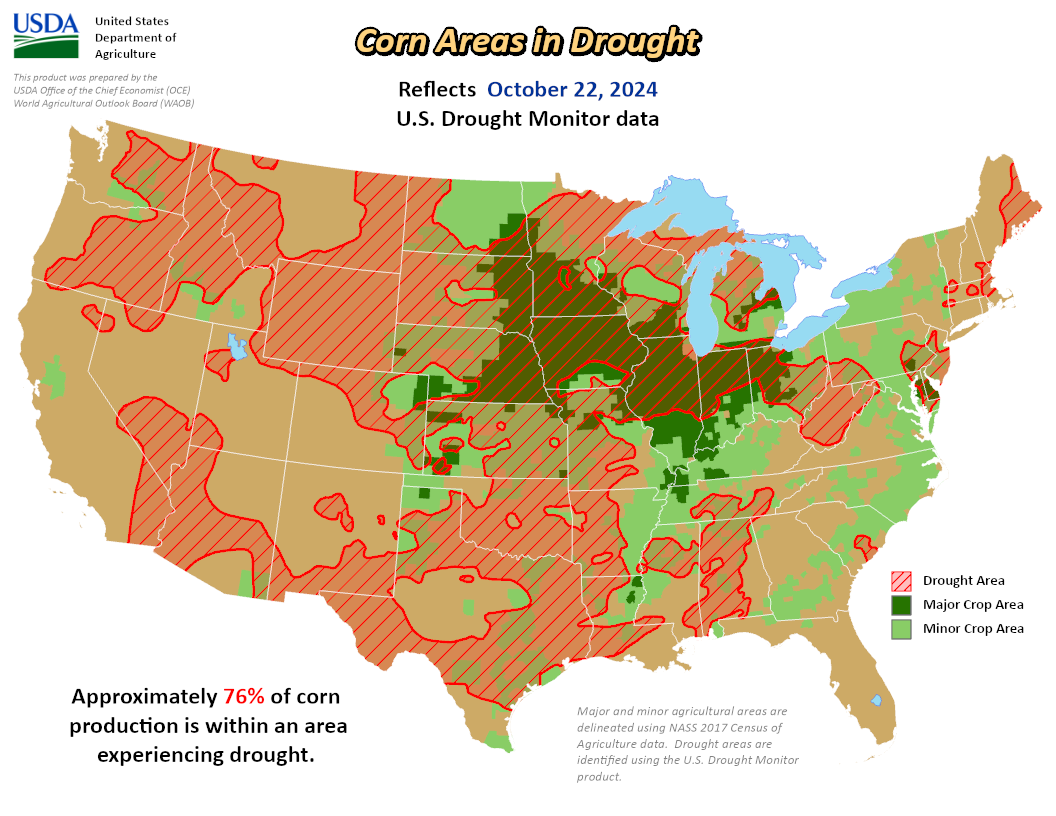
Figure 4. U.S. Corn Producing Areas in Drought
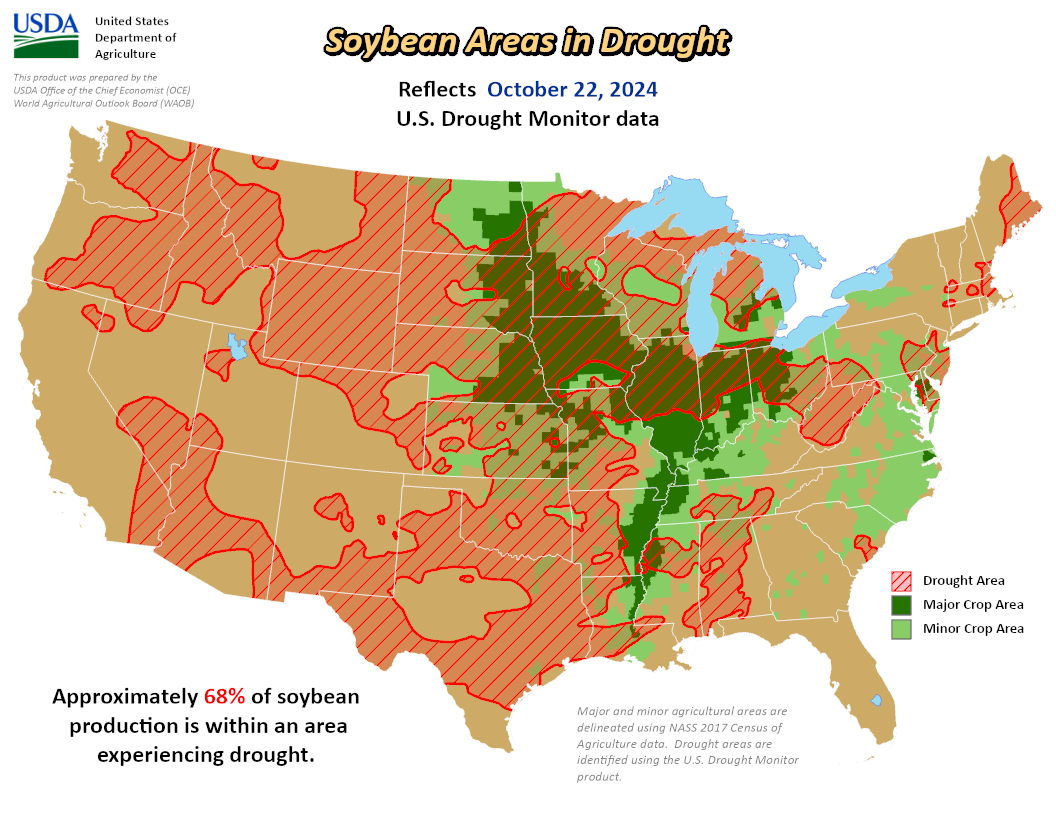
Figure 5. U.S. Soybean Producing Areas in Drought
Cattle and hog production have also been impacted about drought conditions with 59% and 72% of cattle and hog production areas respectively, being in drought areas (Figure 6 and Figure 7). As the leading hog producer in the U.S., Iowa has been largely affected with most hog production areas being in drought zones.
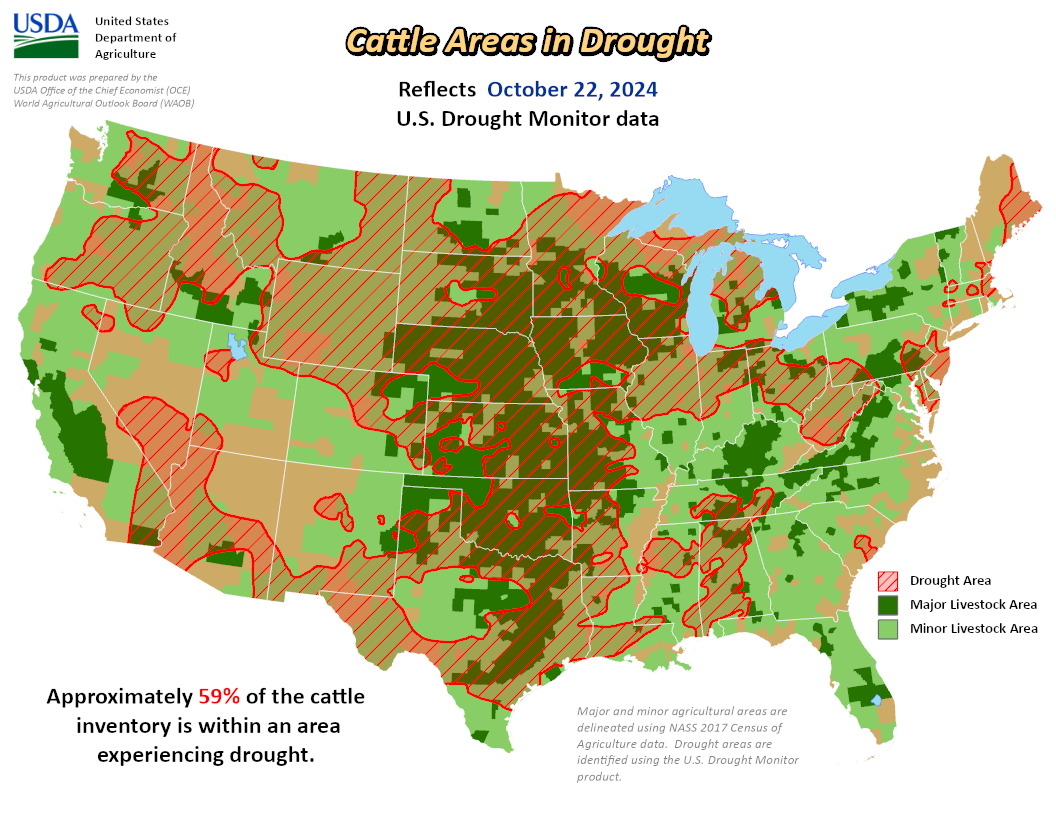
Figure 6. U.S. Cattle Areas in Drought
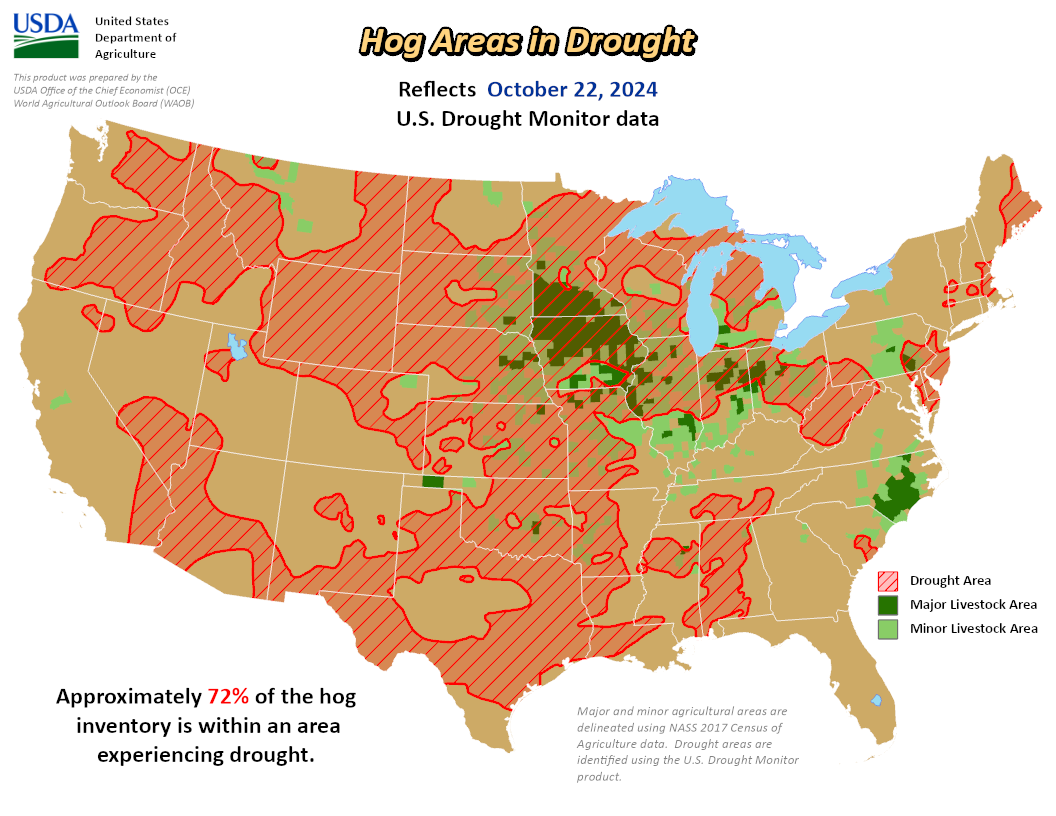
Figure 7. U.S. Hog Areas in Drought
Additional Resources
For additional background on this topic, please see the following articles:
- October 25, 2022: Low Mississippi River Levels Creating Unusual Basis Situation (iowafarmbureau.com)
- May 15, 2023: Mississippi River Flooding Update (iowafarmbureau.com)
- September 24, 2023: Mississippi River Levels Low, Barge Rates Rising (iowafarmbureau.com)
Want more news on this topic? Farm Bureau members may subscribe for a free email news service, featuring the farm and rural topics that interest them most!